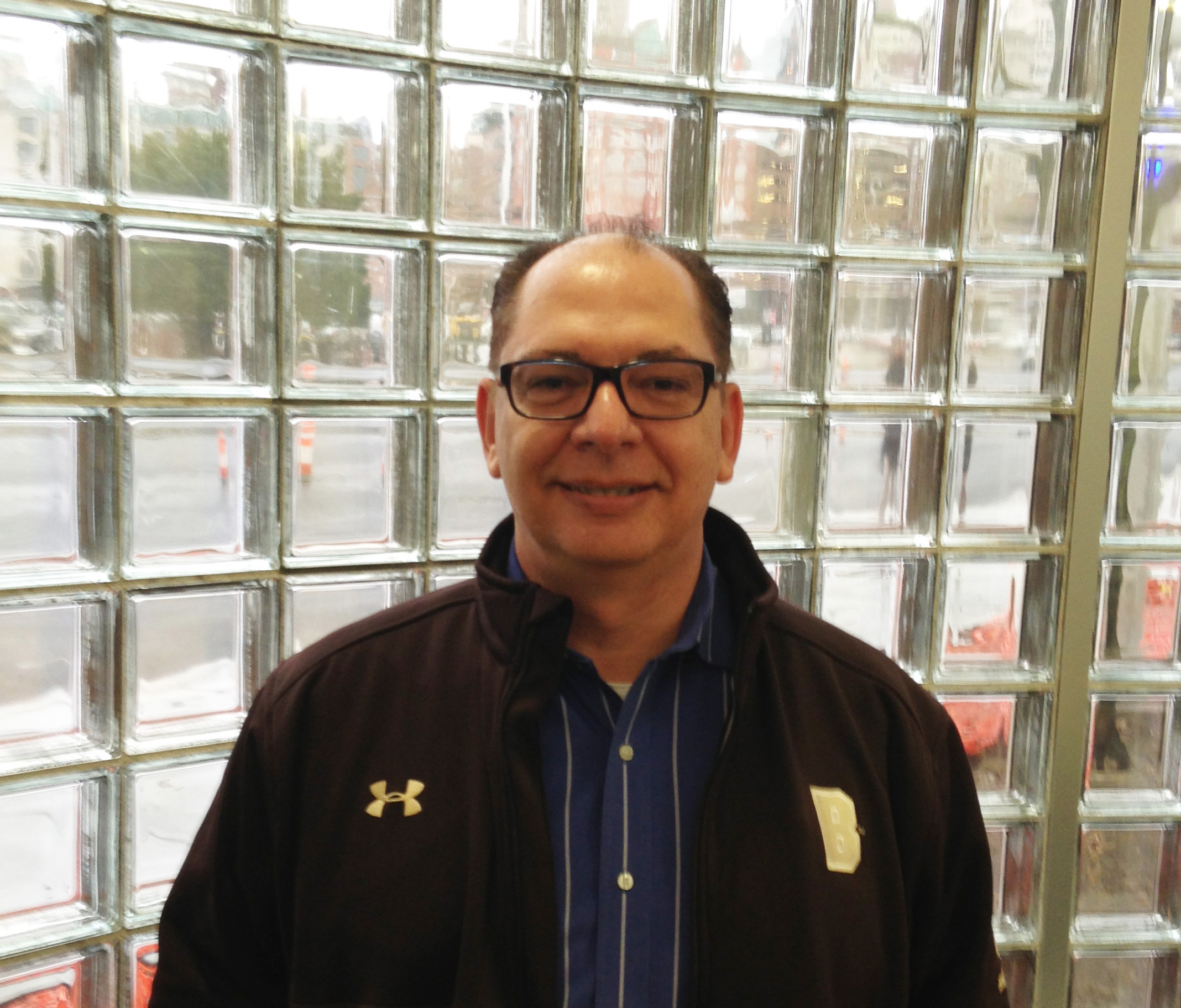Executive master program in health care leadership finds answers close to home
Visit by Brown graduate students to Blackstone Valley Community Health Care discovers health leadership in action
PROVIDENCE – The inaugural class in the Brown University Executive Master of Healthcare Leadership will finish up its final session on campus this week, as part of the 16-month program that mixes online learning with four, on-campus study sessions.
The premise of the new master’s program is that health care is undergoing a rapid, disruptive and persistent change, and it will require visionary leaders to transform the health care delivery system, according to Christina Paxson, president of Brown University, in her talk when the program first launched in August of 2013.
The class of 2015 enrolled 28 students from 14 states, including five from Rhode Island.
“This program is about tearing down silos, connecting different players, and creating transformational, dynamic, systemic health care solutions,” said Judith Bentkover, executive director of the master’s program, in a quote highlighted in the program’s brochure.
The curriculum focuses on courses such as health care policy, data-driven decision making, strategic planning and value creation in integrated health care, information-empowered patient care, and quality improvement. Each student chooses a critical challenge project, a case study to apply the knowledge garnered.
As one of the last events arranged during the final on-campus study session, the students took a tour of Blackstone Valley Community Health Care in Pawtucket, a community health center only a few miles down the road from the Brown campus.
What they found astounded many of them: a community health center that serves about 15,000 patients a year, where many of the transformative ideas on health are that they had wrestled with in the classroom were being applied in practice successfully.
Students in the Brown master’s program, in interviews with ConvergenceRI the day after the visit, expressed amazement at the success of Blackstone’s sophisticated ability to integrate health IT at the point of care, at their willingness to “walk the talk” in creating a team approach to the delivery of care, and at their financial prowess in bending the medical cost curve.
High performance
For Dr. Chiledum A. Ahaghotu, the Associate Dean of Clinical Affairs and Professor and Chief of Urology at Howard University in Washington, D.C., and a member of the Class of 2015 in the Executive Master of Healthcare Leadership, the visit to Blackstone Valley confirmed the value of what he had been learning at Brown.
“My own personal project revolves around partnering our academic health center to a community-based practice in an under-served part of the city,” Ahaghotu told ConvergenceRI. “We are trying to bring this big organization into the community through this partnership, and we’re meeting a lot of the challenges that you would expect.”
It’s been hard to conceptualize, he continued, how to create high performance in an environment that doesn’t traditionally lend itself to that.
“Blackstone Valley Community Health Care is exactly that – it is a high-performance organization, embedded in a very impoverished, high-crime, challenged community, a very vulnerable community because of that,” Ahaghotu said. “So, it was really exciting to see it, in operation.”
Ahaghotu continued: “We’ve read about it, we’ve ready about leadership, and culture, and core values, and process improvement – all the things that lead to high-performance organizations. But, actually seeing it was really, really impressive.”
Ahaghotu praised Blackstone Valley’s sophisticated used of health IT at the point of care. “They are leveraging health information technology to drive quality and reduce costs and increase access,” he said. “They’re doing it, they’re actually walking the talk.”
One of the questions that Ahaghotu said he and his fellow students posed to Blackstone Valley’s executive director, Ray Lavoie was: what’s the one thing that’s the most important reason behind your success?
“He answered: Data. You’ve got to control the data, you’ve got to manage the data, and the only way that you can do that is through the advantage of IT resources. And, it’s an investment, it’s not cheap, and you have to put the money up front,” Ahaghotu said, sharing Lavoie’s answer.
Further, Ahaghotu continued, Lavoie made it clear that having good health IT records wasn’t enough. “You have to go beyond that; you have to go to a population health management system,” Ahaghotu said, relating what Lavoie said. “You have to understand how your patient population is utilizing health care resources, not only at your institution but wherever they go for care. You have to understand in a way that allows you to manage their behaviors and how they use the system. That’s how you get to drive down the costs.”
For Ahaghotu, moving forward with his efforts in the District of Columbia, and his own critical challenge as part of his Brown studies, the focus has become on how to develop a shared savings funding model that supports and rewards high-performance operations.
Ahaghotu called the visit to Blackstone Valley one of the top three experiences while at Brown.
“The data management system was great, the facility was great, but what really resonated for me was the culture. You could feel it, from everyone that we came into contact with, a kind of quiet discipline, a kind of humility,” he explained.
The folks at Blackstone Valley, Ahaghotu continued, have created a really good operation. “But they’re not out there, blowing their horn. Dr. Jose Polanco, the medical director, talked with us about team huddles, and how the medical assistant was the coordinator of the team. Not a lot of doctors think like that – to have a medical assistant take the leader. I loved it,” he said, adding: “It was another step in the process of transformation for me.”
Ahaghotu also praised the experience at Brown. “The master’s program is amazing. There’s no program like this in the country; it’s the only executive master’s in health care leadership in the United States right now. It has great faculty, and a great cohort – we’ve got doctors, engineers, architects, lawyers, venture capitalists, everybody.”
Mission and vision aligned
When Deborah Pfeifle-Watkins began her studies at the Brown program, the Florida resident was the CEO of a firm, Gould & Lamb, a global leader in Medicare compliance.
Now, after that company was acquired and she is no longer employed by them, she described herself as being in an in-between phase, what she said in the United Kingdom was described as “gardening phase.”
For Pfeifle-Watkins, whose critical challenge at Brown is on dually eligible members of Medicare and Medicaid, the tour at Blackstone Valley was very exciting, because it had relevance to her own project.
“I have to tell you, I was extremely impressed with their vision and mission, and how they aligned that mission with technology and resources – all of the concepts that we talk about in this program,” she said.
From her own research as part of her critical challenge on dual eligibles, she continued, and what she said was a very extensive literature review, the key elements of success were: strong leadership, care coordination, and operation systems and technology to support that work, as well as the ability to create efficiencies and improve communications, and to measure outcomes, and to have the analytics available to measure all of those things.
“Blackstone Valley has all of those features, and they integrated those key elements very well, she said. “They can deliver on all of them.”
At an educational level, Pfeifle-Watkins continued, “Blackstone Valley has created a learning environment – when they take their rounds, at the daily meetings when they meet together to prepare for the day – they educate all the staff, to make sure that all the staff were immediately aware of individual patients and what their needs and concerns were, to maximize that visit.”
Pfeifle-Watkins was particularly impressed with Blackstone Valley’s data analytics. “They were able to tell, right off the top, that out of their 15,000 patients, 500 or 600 were dual eligibles,” she said.
The visit to Blackstone Valley, she continued, was a major highlight of the program at Brown. “In my readings and my own travels, and in my own conversations with other people around the county, most people are kind of scratching their heads right, to figure out in silos, how to do this,” she said. Blackstone has, she continued. “I just felt that it was a very well-oiled machine,” she said. “Clearly, the results and their data analytics show that they generating savings [as well as good outcomes].”
Pfeifle-Watkins said that if there were a way to share this information about what Blackstone Valley had achieved, it would help promote the delivery of integrated, coordinated care. The visit, she said, “was really the culmination of the program. It could not have been a better choice.”
Breaking down the silos
Dr. Elias Bendeck, who has been practicing internal medicine for 23 years, primarily in geriatrics, is currently based in Boca Raton, Florida.
For him, the visit to Blackstone Valley was an outstanding experience. “In our education here, we’re looking for integration of care for patients,” he began. “We have trouble integrating clinical areas of need with mental health needs and dental health needs. That was one of the particularly impressive things about Blackstone: they manage to provide all of those needs in one setting.”
That concept, Bendeck continued, “is basically unheard of where I come from. There is not mental health support, access is limited, and there is no dental support as well. People are on their own.”
The kind of facility that Blackstone Valley has created, Bendeck continued, needs to be contemplated. “It’s very impressive – as is the comprehensive care they deliver to their patients.”
Bendeck said that he was also very impressed with the integrated quality of health care data – and the way such data is shared.
“They are so well interconnected, and the flow of information is so streamlined,” Bendeck said, praising the way that Blackstone Valley utilizes its NextGen system and health information exchange. “It’s proof that integrated health IT can really improve quality of care.”
What the visit to Blackstone did for Bendeck, he continued, was to demonstrate how the things that were being talked about the classroom at Brown could become an actual working reality.
“Blackstone Valley made the vision of integrated medicine a reality for me,” he said. “We’ve look at all the barriers and all the opportunities to make it happen, but we didn’t have the evidence or proof that it was doable.”
Bendeck, whose critical challenge project is looking at transitional care at the time of discharge from hospitals, called the visit very reassuring.
“We are all struggling in our environments,” he said. “To see that there is this institution that has managed to use health information technology to its advantage, to integrate clinical care, dental care, and mental health care, is reassuring.”
Bendeck also praised the leadership at Blackstone Valley. “They have created the right culture, surrounded themselves with the right people, and made it possible for Blackstone to become what they are today,” he said.
The challenge, he continued, is whether Blackstone’s model can be translated to a different payer environment. “That’s the big challenge.”








